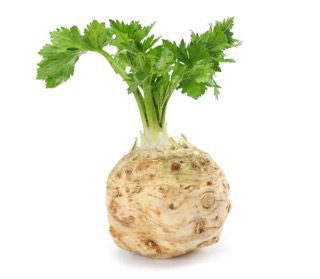

Celeriac is a safe vegetable for dogs to eat, as it is rich in essential nutrients such as calcium, copper, iron, phosphorus, and vitamin K. However, it is important to serve celeriac in moderation to avoid causing flatulence in dogs due to its high carbohydrate levels.
Celeriac contains sedanolide, which has been shown to decrease the risk of tumors in dogs. Additionally, celeriac is packed with vitamins and minerals that promote good health and a strong immune system. Its anti-inflammatory properties make it a great choice for dogs with joint pain, and its low calorie content makes it a healthy option for overweight dogs. Celeriac can also help freshen a dog’s breath.
While celeriac is generally safe for dogs, excessive consumption can lead to digestive issues such as diarrhea. It is important to monitor your dog’s intake and serve celeriac in moderation.
Celeriac can be fed to dogs either raw or cooked, but it is important to cut it into small pieces to avoid choking hazards. Serve celeriac in moderation as a healthy snack or as part of a balanced meal.
Celeriac, also known as celery root, is a root vegetable that belongs to the same family as celery. It is native to the Mediterranean and has been cultivated in Europe since the Middle Ages. Celeriac can be cooked or eaten raw, and it has a nutty, celery-like flavor. This vegetable is affordable and easy to find in most grocery stores.
For dogs, celeriac can be a healthy addition to their diet. It contains sedanolide, which can help prevent tumors in dogs. Celeriac is also rich in nutrients, such as calcium, iron, and vitamin K, which can help promote good health and a strong immune system. It can help freshen your dog's breath and is an ideal snack for overweight dogs as it is low in calories.
It's necessary to feed this vegetable in moderation because of the high carbohydrate levels, which can make dogs gassy. Excessive consumption can also lead to diarrhea. Therefore, it's important to monitor your dog's intake and cut the celeriac into small pieces to prevent choking.
To serve, you can cut the celeriac into small pieces and add it to your dog's meal or offer it as a snack. However, always make sure to feed it in moderation.
If your dog doesn't like celeriac, other root vegetables, such as carrots or sweet potatoes, can provide similar nutritional benefits. Additionally, leafy vegetables such as spinach or kale can also be healthy additions to your dog's diet.
Have you tried feeding your furry friend celeriac? Did they enjoy it? Let us know in the comments below. And to all the dogs out there, enjoy your healthy snacks!